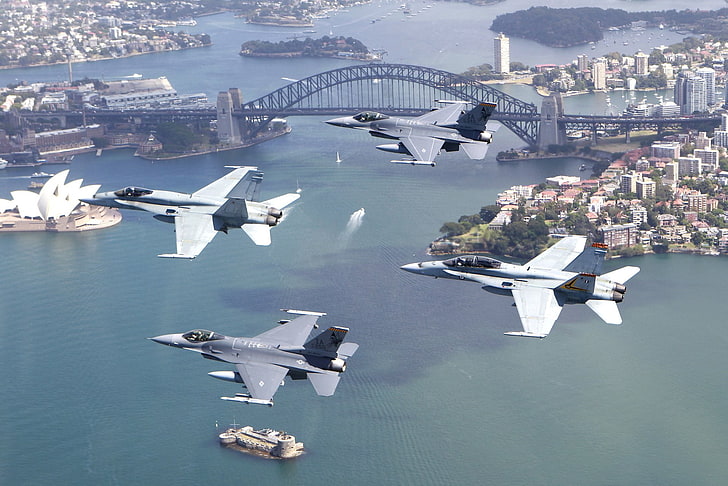The waiting is over. Some 15 months after we knew it was coming, and 13 since Boris Johnson outlined his intent for an integrated review of foreign policy, defence, security and international development, the command paper Global Britain in a competitive age was finally published on 16 March 2021. The same day, the Prime Minister confirmed that the review “describes how [the UK] will bolster [its] alliances, strengthen [its] capabilities … and relearn the art of competing against states with opposing values”. However, even after only a cursory read through the document, it would appear that the government has completely eschewed the need for a national security strategy.
Detailed analysis will come in time
Although a detailed analysis of the command paper will take some time, early reaction, both in the mainstream and on social media, has generally been positive. For example, writing in The Times, Sir Alex Younger, former chief of the Secret Intelligence Service, welcomed the review’s focus on the things within the nation’s control, as well as its doubling down on the UK’s existing strength. And on Twitter, Sir Humphrey, a defence commentator with almost 22,000 followers, called the review an excellent document, suggesting it has “a refreshing approach to security from the widest possible perspective, and sets a very positive direction of travel for the UK”. However, it should not be forgotten that both the 2010 and 2015 Strategic Defence and Security Reviews (SDSR) were also initially greeted positively, but their subsequent unravelling, as a result of changes to the geopolitical landscape and lack of resources at the national level, has since attracted considerable criticism.
Early judgement on the Command Paper construct
While we wait for more in-depth scrutiny of the review to emerge, it is possible to make an early judgement on the construct of the command paper, and how it might guide the UK’s approach to the geopolitical challenges that will unfold over the next decade. In this regard, first impressions are not encouraging. For example, even though the document’s evidence and engagement annex talks about a strategy development process (page 106), the Integrated Review is not, in itself, a strategy. It does, however, promise significant amounts of strategic jam tomorrow. For instance, later this year there will be a new cyber strategy (page 41), a new national space strategy (page 58), and a new national resilience strategy (page 88). Next year sees a new international development strategy (page 46), and there are numerous references to other, standalone strategies (for example, a national data strategy, a defence AI strategy, and a UK border strategy). What is missing from this list is national security strategy. Indeed, the Integrated Review includes only one direct reference to national security strategy, and that simply confirms the National Security Council remains “the key formal mechanism through which ministers collectively set national security strategy and policy, and oversee implementation” (page 97). It would appear that the government now longer sees the need to recognise and maintain a publicly accessible national security strategy.
Does this matter?
UK’s approach to National Security Strategy
The first national security strategy – Security in an interdependent world – was produced by the Labour Government of Gordon Brown in 2008. It was updated a year later. Following the 2010 general election, the Conservative/Liberal Democrat coalition government published a new national security strategy – A strong Britain in an age of uncertainty. Finally, in 2015, the Conservative government merged its national security strategy and SDSR into a single document, A Secure and Prosperous United Kingdom. All four documents were constructed around a risk management methodology, which, since 2010, has been underpinned by a classified national security risk assessment. In broad terms, all of the strategies have attempted to address security challenges through the following: understanding and tackling the drivers of threats to the UK; understanding the UK’s position interests and responsibilities; confirming planning assumptions to guide the UK’s security priorities; and detailing capabilities and actions to tackle the drivers, address the threats and be effective in all important domains of activity.
The Integrated Review confirms the Prime Minister’s commitment to deeper integration across government, which will be achieved through building on the Fusion Doctrine introduced in the 2018 National Security Capability Review (page 19). The NSCR recognises that the start point for the Fusion Doctrine is the national security strategy. One level down, the MoD’s operating model – How Defence Works – recognises that the start point for how the Department must conduct and configure its activities to deliver its outputs is also the national security strategy. This is reinforced in UK Defence Doctrine, which states that “the SDSR identifies the means and ways across Government which are needed to deliver the ends described in the National Security Strategy”.
Both pan-government and MoD ways of working are dependent on a contemporary national security strategy. To that end, the answer to the “does this matter?” question is a resounding yes!
The Importance of Strategy
The obvious counterargument is that the Integrated Review still provides all of the necessary strategic direction, and therefore doesn’t need to be constrained by labels. @onUKDefence disagrees. Edward Luttwak observed that “all states have a grand strategy, whether they know it or not”; a view supported by Hal Brands who defined grand strategy as “the theory or logic that binds a country’s highest interests to its daily interactions with the world”. More significantly, undertaking strategy is about prioritising finite resources to accomplish objectives defined by national policy. In the words of John Lewis Gaddis, strategy at the national level is “about how one uses whatever one has to get to wherever it is one wants to go”.
According to Colin S Gray, at its simplest, strategy can be defined as the direction and use made of means by chosen ways in order to achieve desired ends. The Integrated Review includes the following four objectives within its strategic framework (page 18):
– Sustaining strategic advantage through science and technology.
– Shaping the international order in the future.
– Strengthening security and defence at home and overseas.
– Building resilience at home and overseas.
These objectives could be interpreted as the Integrated Review’s ends. There are, however, no strategic concepts or courses of action in the document to explain how these ends are to be accomplished, i.e. there are no ways. In addition, there is no explanation of what specific resources are to be used in applying the strategic concepts to meet the objectives, i.e. there are no means. Finally, there is no explanation of the gap between what is to be achieved and the concepts and resources available to achieve the objectives, i.e. there is no recognition of risk.
Conclusion
In giving evidence to the Joint Committee on the National Security Strategy, a senior minister once confirmed that the government’s approach to emerging geopolitical situations would be to “do what we can that looks sensible at the time”. This seat-of-the-pants approach suggests a real ignorance of strategy in the round. The government today clearly sees a national security strategy as a constraint rather than an aid to its decision making in times of crisis. Moreover, a cynical view might be that it has been deliberately removed from the Integrated Review to make it more difficult to hold the government to account when risks materialise. As an example, the government was severely criticised over its lack of preparedness when the COVID 19 pandemic struck last year, particularly as a result of inadequate stockpiles of PPE, because “a major human health crisis” was one of the five tier one risks in the national security strategy. No national security strategy means no prioritised list of risks, which removes a potential stick to beat the government were it to fall short again in the future. Politically this may be considered shrewd; in terms of coping with future geostrategic crises, it is sheer folly.







1 comments On The Integrated Review: what’s happened to the National Security Strategy?
As a serving British Army soldier (Warrant Officer), with 22 years tactical and operation experience, I’ve now found myself in a strategic role. In short, your analysis of the Integrated Review has help me assimilate this detailed document “Absorb complexity, deliver simplicity”. Thank you.